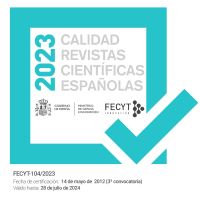The most capable students in Spain. Normative and incidence in diagnosis and education
DOI:
https://doi.org/10.5944/reop.vol.24.num.1.2013.11267Keywords:
special needs students, academic achievement, politics of education, students assessment and highly gifted studentsAbstract
ABSTRACT
The study analyses the national and regional (Autonomous Communities, AC) regulations for the education of highly gifted students, and the impact on their identification and educative intervention. We conclude that the LOGSE (General Organic Regulation of the Education System in Spain, 1990), which prompted the attention to diversity, failed to mention these students, though this situation was partially modified in subsequent developments of the law. The AC have regulated this issue differently, which is seen in the diversity of processes of diagnosis used, and the types of attention given to the learning needs of these students, as well as in the proportion of identified students found within these programs. We come across that there is 1.3 times more students identified in primary schools programs than in secondary, and six times more than in high school. Proportions are similar both in public and state-subsidized schools. The national average for high ability students is 0.8%, a paltry proportion in the context of usual parameters on development of talent and excellent and equitable education for all students. Two thirds of the identified students are male, and this preponderance seems to be linked to gender stereotypes, because it is not found among students with excellent performance from PISA studies (2006, 2009) , nor among students with High School Awards or with Excellence scholarships (Jimenez et al., 2006, 2010).
Downloads
Downloads
How to Cite
Issue
Section
License
Las obras que se publican en la revista REOP están sujetas a los siguientes términos:
1. Los autores conservan los derechos patrimoniales (copyright) de las obras publicadas, y garantizan a la revista el derecho de ser la primera publicación del trabajo al igual que permiten la reutilización de las mismas bajo la licencia de uso indicada en el punto 2.
2. Las obras se publican en la edición electrónica de la revista bajo una licencia Creative Commons Reconocimiento-NoComercial 4.0 Internacional . Se pueden copiar, usar, difundir, transmitir y exponer públicamente, siempre que: I) se cite la autoría y la fuente original de su publicación (revista, editorial y URL de la obra); II) no se usen para fines comerciales; III) se mencione la existencia y especificaciones de esta licencia de uso.
3. Condiciones de auto-archivo. Se permite y se anima a los autores a difundir electrónicamente la publicación de sus obras, ya que favorece su circulación y difusión y con ello un posible aumento en su citación y alcance entre la comunidad académica.






